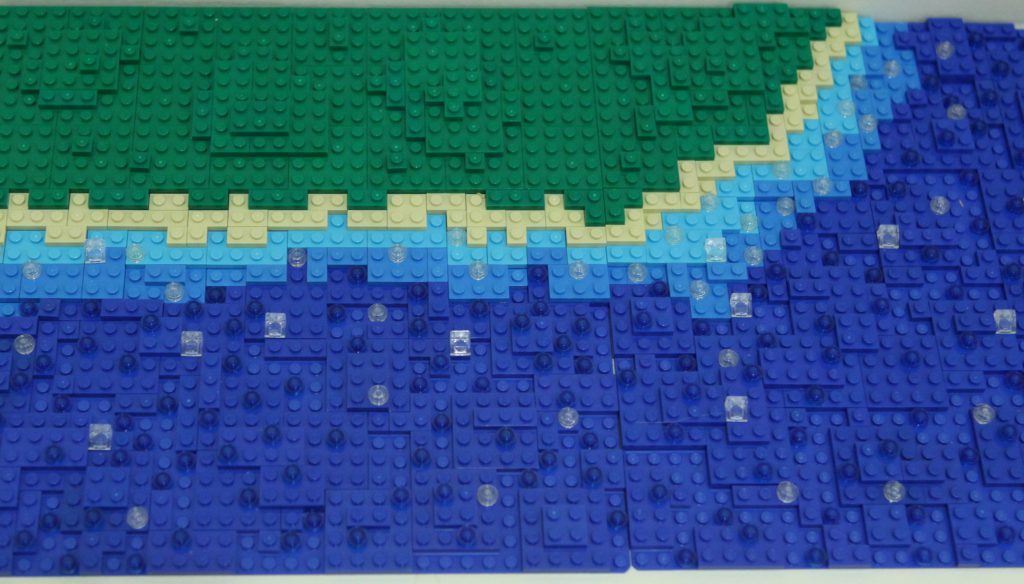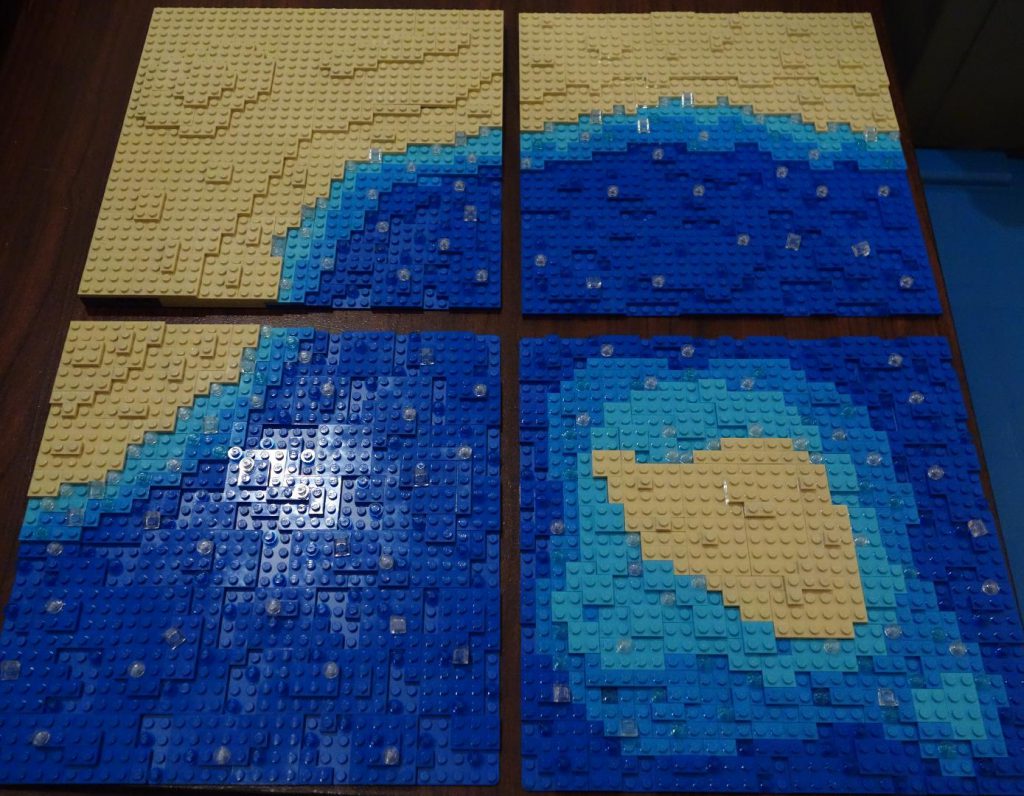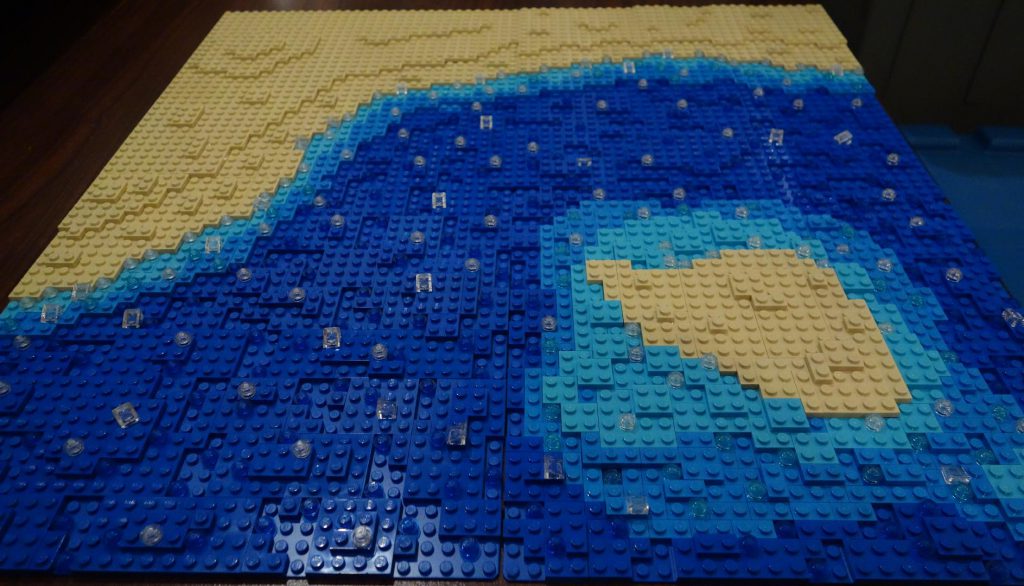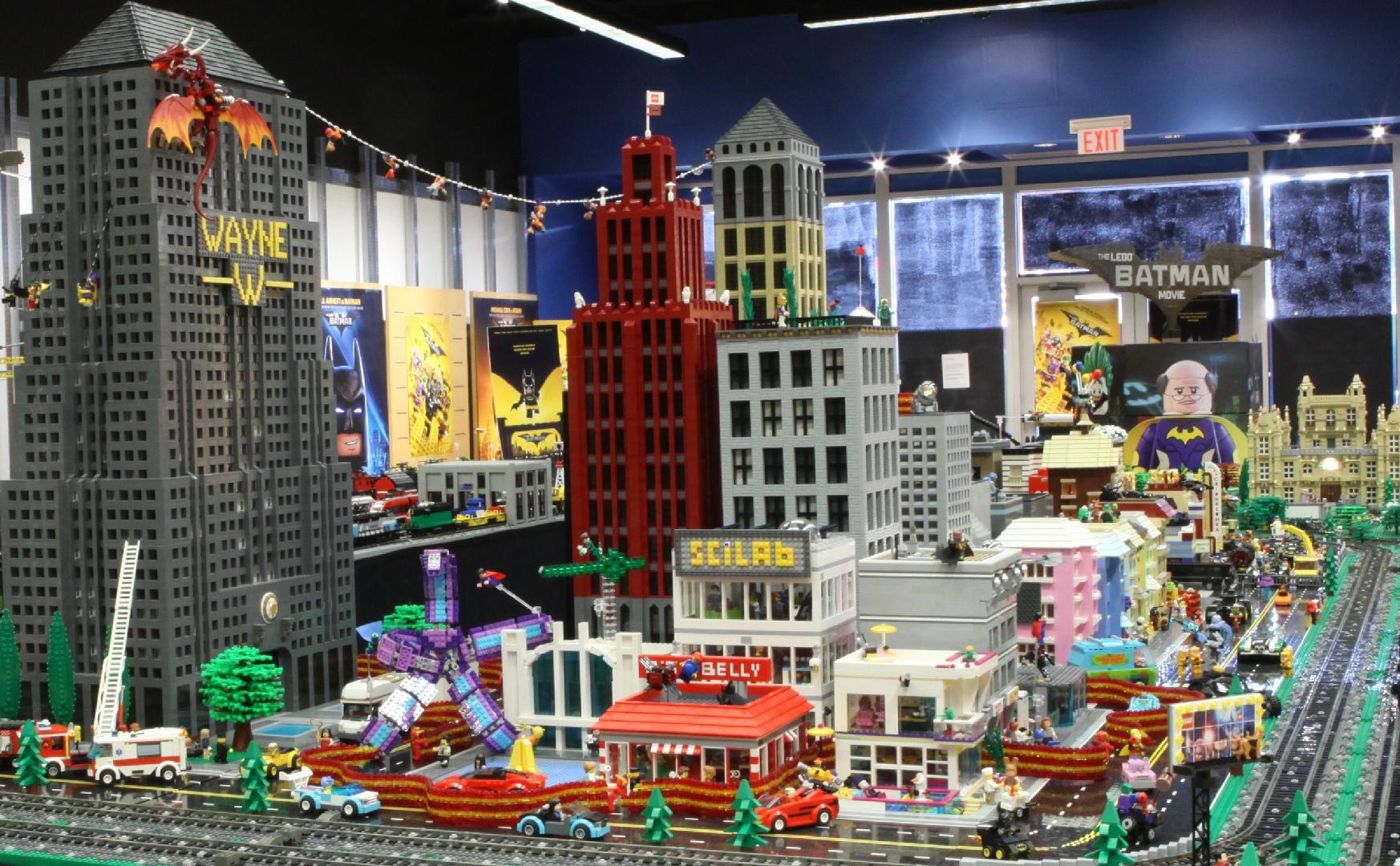Our ocean standard is designed to meet up with a MILS baseplate and still have some nice texture. Each section should be on a 32×32 baseplate. Here is a high resolution image of 2 sections with standard grass coast with ocean:

The ocean itself is blue at three heights, the baseplate level, one plate above and two plates above. The heights should be somewhat random to simulate a rough surface (like the ocean). Above the blue plates, there are trans-blue plate, round 1 x 1’s that are randomly placed at all levels. There are also trans-clear plate, round 1x1s and trans-clear cheese slopes. Although other trans-clear pieces can be substituted for these as long as they blend in reasonably well. If you want to show a rougher ocean area (maybe near some rocks), then add more of the trans-clear pieces.
For coastal areas, there can be multiple types. The most basic coasts are grass, which is shown in the image above and beach. Another common coastal type is rocks, which would use dark gray slopes and more trans-clear pieces at the edge to show more waves.
All of the coastal types should transform from water to land around the midpoint of the 32×32 baseplate at the edges of each section which needs to interface with other sections. For the grass standard, the ocean should have approximately 14 studs and the grass would have about 14 studs and the shallows and beach would be approximately 4 studs. The coast should wander around a bit in the middle part of the section to avoid straight lines. You can design multi-section areas that are designed to be together so all sections don’t have to conform to the interface rules for the coast. However, the interfaces on the outer edges of these multi-section areas should conform to the standard interface rules.
The colors of the standard grass, beach, shallows standard are (all colors are Bricklink colors):
Grass: green at a height of 4 plates
Beach: tan at a height of 3 plates
Shallow 1 (closest to the beach): Medium azure at a height of 2 plates
Shallow 2 (closer to the ocean): Dark Azure at a height of 2 plates
Ocean: Blue at a height of 0 to 2 plates
Minor fluctuations of height, position and accent colors are expected and desired, please make sure it looks good with the generic standard so we can interchange the pieces.
Similar to grass, the beach, shallows standards are:
Beach: tan at a height of 3 and 4 plates (the back part of the beach should mostly be at 4 plates high since it’s designed to be next to a tan MILS piece.
Shallow 1 (closest to the beach): Medium azure at a height of 2 plates
Shallow 2 (closer to the ocean): Dark Azure at a height of 2 plates
Ocean: Blue at a height of 0 to 2 plates
The beach transition should be near the middle of the baseplate (between the 16th and 17th stud) so it will line up with the piece next to it. However, it is expected to fluctuate +- a stud or two to avoid straight lines. Here are 4 examples of a beach coast (a straight beach, an inner curve beach, an outer curve beach and an island):

With all four put together, the scene looks like:

